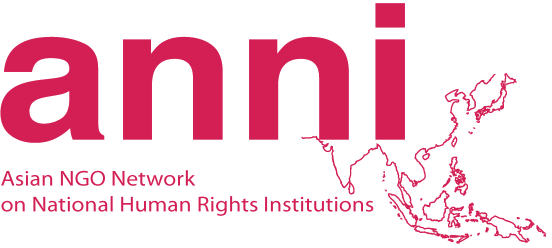 A report on the practice of capital punishment in India has found that the death penalty is being applied arbitrarily, inconsistently and unfairly, and that its use is largely determined by a person’s socio-economic background. India is lagging behind the majority of States that have called for a moratorium on executions and is not abiding by its international legal obligations. As a result, it must abolish this unjust and inhumane practice.
A report on the practice of capital punishment in India has found that the death penalty is being applied arbitrarily, inconsistently and unfairly, and that its use is largely determined by a person’s socio-economic background. India is lagging behind the majority of States that have called for a moratorium on executions and is not abiding by its international legal obligations. As a result, it must abolish this unjust and inhumane practice.
On 2 May, 2008, Amnesty International-India and the People’s Union for Civil Liberties released a report1 that examines the practice of capital punishment in India. The report seeks to fill the void on this subject matter by taking into account the socio-economic background of the victims of the death penalty. It analyses the unfairness of the death penalty by using evidence found in Indian Supreme Court judgments and looking at factors such as caste, community and religion. There is no doubt that the death penalty in India is being applied arbitrarily and inconsistently when looking at the aforementioned factors, which is further impetus for the abolishment of this unjust and inhumane practice.
Over the past three decades there has been a global trend to end the death penalty. The United Nations General Assembly voted for a moratorium on executions on 18 December, 2007. By a vote of 104 to 54 (with 29 abstentions), resolution 62/1492 was passed. India was one of the 54 countries that voted against the resolution, upholding its ability to apply the death penalty. India stands at the crossroads of this debate; it claims to restrict the death penalty to the “rarest of rare” cases, while increasing the number of offences punishable by death. It should be noted that 140 people are believed to have been sentenced to death in 2006 and 2007, with executions being carried out by hanging. Death sentences have even been imposed on people who may have been children at the time of the crime, as well as people suffering from mental illness.
India is a party to most international human rights instruments. It acceded in 1979 to the International Covenant on Civil and Political Rights (ICCPR)3, which states: “In countries which have not abolished the death penalty, the sentence of death may be imposed only for the most serious crimes…” India has not adhered to this clause by applying the death penalty for kidnapping and ransom, as well as for drug-related offences. Moreover, while the ICCPR, coupled with resolution 62/149, calls for the consideration of the abolition of the death penalty, India has actually increased the number of special laws that allow for the use of the death penalty4. Thus, the use of the death penalty in India is not only a moral issue, but it is a matter of international legal obligation.
In 1980, the Supreme Court voted on an important decision in the Bachan Singh case. While the Supreme Court upheld the constitutionality of the death penalty, this decision was not unanimous, as the judgment called for the use of the death penalty only in the “rarest of rare” cases5. However, it is important to ask what makes a case the “rarest of rare.” The report provides some answers to this question by identifying abuses of law and procedure and of arbitrariness and inconsistency in the investigation (consideration of evidence), trial (inadequate legal representation), sentencing (delay in carrying out the sentence), and appeal stages in capital cases (executive clemency).
One of the most shocking aspects of the death penalty is that convictions are solely based on circumstantial evidence, which can be fabricated. The difference with death penalty cases is that a flawed decision results in the arbitrary loss of life. This is evidenced by the fact that 100 out of the 700 cases examined in the study resulted in acquittals, meaning that a high proportion of individuals had been sentenced to death in trial courts only to have the High Court overturn the decisions.
It is often the case that the socio-economic background of the victims of the death penalty, and not the merits of the case, will determine the outcome. A large number of the accused in India are poor and illiterate. This poses several problems as they may not be able to afford adequate legal representation. And since the High Court rarely requests new evidence, the evidence and arguments put forth by trial lawyers make the case. Evidence related to the innocence of the accused, as well as mitigating factors such as the social, personal or psychological background of the accused, must be presented at trial courts. This is not always the case however, as there is great variance with respect to the quality and ability of lawyers available based on one’s socio-economic background. Needless to say, without access to adequate legal representation or resources, many individuals receive sentences that may not be properly justified.
Another appalling practice is the arbitrariness in sentencing. Similar cases have been treated completely differently in a short time span. This results in the death penalty being exercised subjectively, which reflects inherent flaws in the practice. Furthermore, in cases where the death penalty is deemed to be the appropriate punishment, there is not a set timeframe for execution, resulting in the death row phenomena where individuals live with the fear of execution in substandard human rights conditions.
The concept of applying the death penalty to only the “rarest of rare” cases would be clearer if India applied the law consistently. What is clear is that what is the “rarest of rare” in one instance might be commonplace in another instance; this leads to different applications of the law. Not only is India lagging behind the majority of States who have called for a moratorium on executions, but it is also not abiding by its international legal obligations. In this respect, the Government of India should accede to the Second Optional Protocol to the ICCPR6. In the meantime though, the Government should take the necessary steps to promote and protect human rights in its judicial system by ensuring transparency, improving procedural safeguards, ending torture/ill-treatment and respecting the rights of minorities without discrimination.
1. Lethal Lottery: The Death Penalty in India–A Study of Supreme judgements in death penalty cases, 1950-2006. Available at: http://www.amnesty.org/en/library/info/ASA20/007/2008/en
2. A/RES/62/149: Moratorium on the use of the death penalty. Available at: http://www.un.org/ga/62/resolutions.shtml
3. The ICCPR was adopted and opened for signature, ratification, and accession by General Assembly resolution 2200A (XXI) on 16 December 1966 and entered into force 23 March 1976. Available at: http://www2.ohchr.org/english/law/ccpr.htm
4. The Indian Penal Code considers 9 offences punishable by death. However, there are an additional 14 special laws that allow for executions
5. Bachan Singh v. State of Punjab (1980) 2 SCC 684 (majority), (1982) 3 SCC 24 (Bhagwati, dissenting)
6. The Second Optional Protocol to the ICCPR, which aims at abolishing the death penalty, was adopted and proclaimed by General Assembly resolution 44/128 on 15 December 1989. Available at: http://www.unhchr.ch/html/menu3/b/a_opt2.htm



